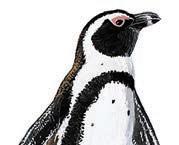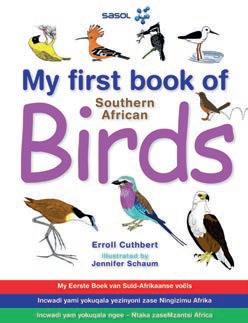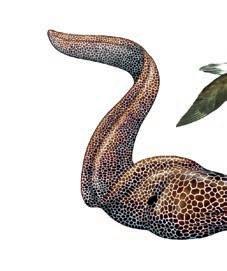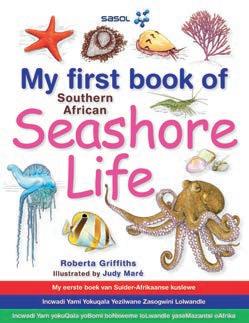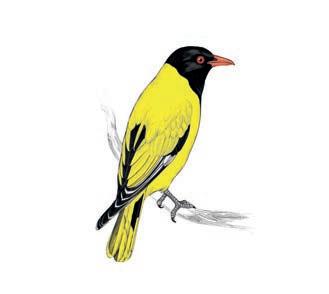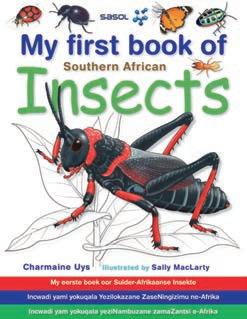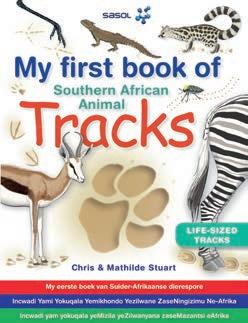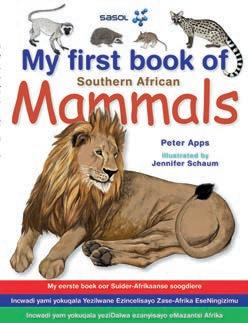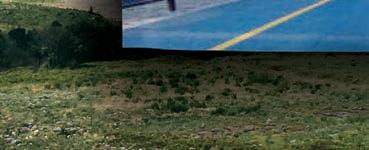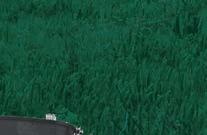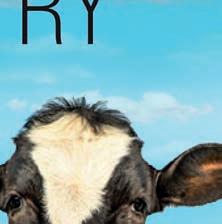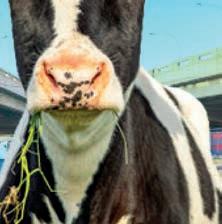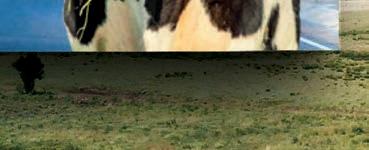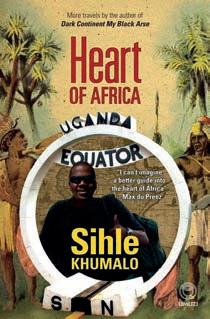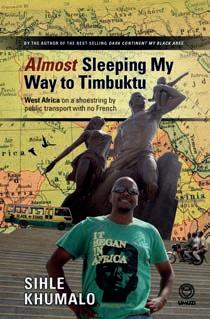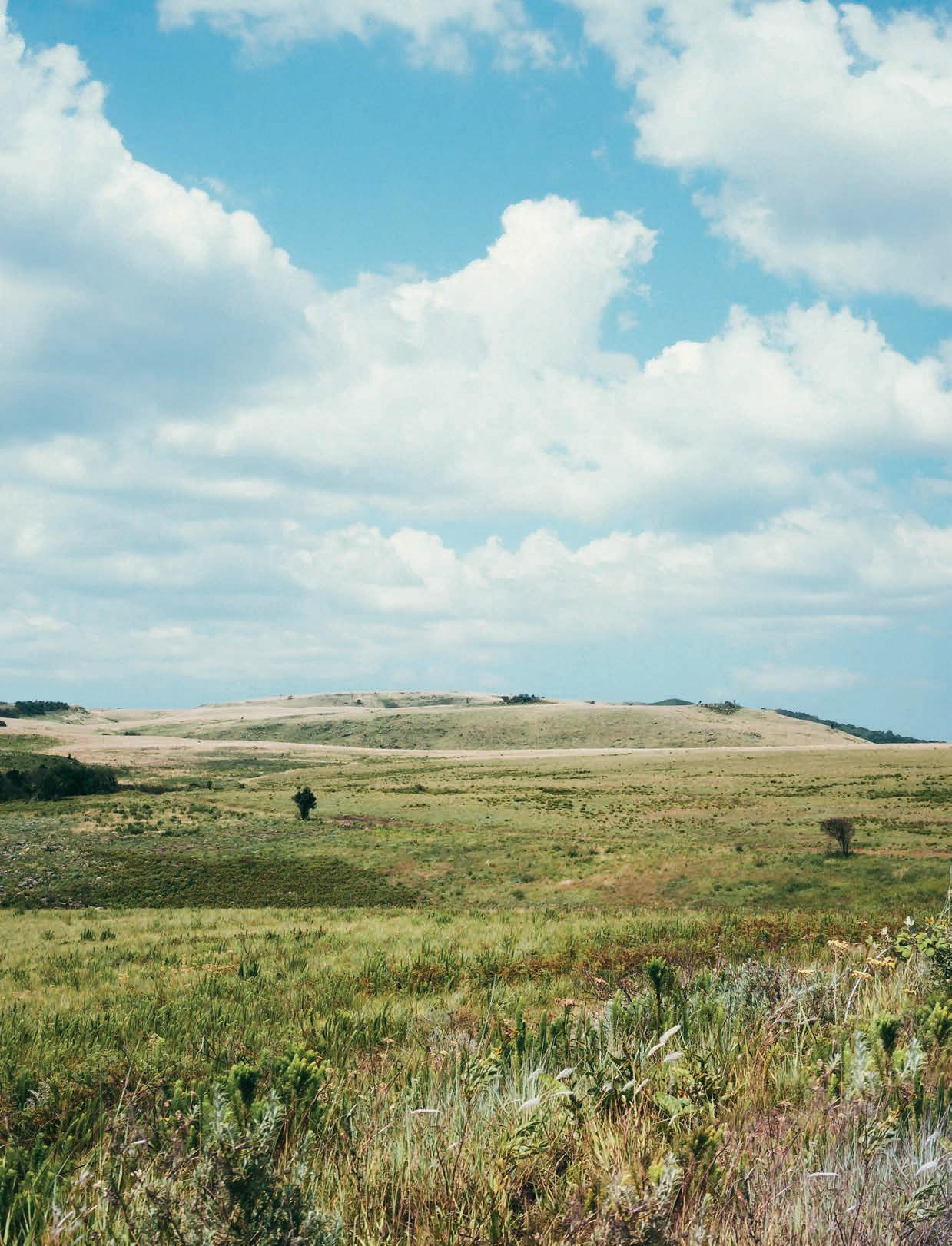THE PENGUIN POST

With the latest releases from Harlan Coben and Gregg Hurwitz to Katie Fforde and Sylvia Day




















With the latest releases from Harlan Coben and Gregg Hurwitz to Katie Fforde and Sylvia Day


















02
BOOKSCAPE The series based on Daisy Jones & The Six, the book dominating the bestseller lists, and a bookworm’s top reads
06 COVER Our favourite foodie Sarah Graham chats to us about her brand-new cookbook, Good + Simple
22
WELLBEING The lifechanging art of turning problems into opportunities
24
ADVICE Invaluable advice on trading from Ross Larter’s Beginner’s Guide to the Stock Exchange
26
The last couple of months feel like a blur. How are we already in March?! Hopefully your resolutions are still going strong, and you’ve been able to make time to get through a book or two. ere are so many books that I’m excited to share with you this issue. I plowed through two great debut novels, Amazing Grace Adams and Pineapple Street, which both have strong women leads, pushing against how society expects them to behave, and carving their own way through life. Both of these would make amazing additions to your book club, if you’re keen to explore a little, but if you prefer familiar favourites, there is still loads to choose from in our ction bonus.
Cover photo Claudia Janke Disclaimer: The views and opinions expressed in this magazine are those of the authors and do not necessarily reflect those of the publisher.
12 FICTION BONUS
Interviews and columns from authors such as Gregg Hurwitz and Stuart MacBride and debut authors of some of this year’s hottest reads
20 AFRIKAANS Elizabeth Wasserman oor haar eerste ontmoeting met mevrou Smit, terwyl Jeanette Stals vertel hoe ‘n herinnering dit tot in ‘n boek maak
NATURE A new series of books dedicated to South Africa’s largest game reserve, the Kruger National Park
29 FOOD Drool-worthy recipes from Cariema Isaacs’ new cookbook
32 ON MY MIND Black tax getting you down? Ndumi Hadebe explores how to get around this tradition, and still maintain healthy relationships with your family and your money
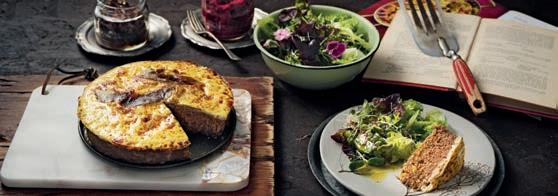
Johannesburg | Growthpoint Business Park, Unit 12A, 162 Tonetti Street, Halfway House Ext 7, Midrand, 1685 | 011 327 3550
Cape Town | Estuaries No 4, Oxbow Crescent, Century Avenue, Century City, 7441 | 021 460 5400
© Copyright Penguin Random House South Africa (Pty) Ltd. The Penguin Post is published by Penguin Random House South Africa. All rights reserved. Reproduction without the written permission of the editor is strictly forbidden.
Editor Lauren Mc Diarmid Designer Sean Robertson Sub Editor Frieda Le Roux
Contributors David Viviers, Catherine Newman, Ayòbámi Adébáyò, Braam van Wyk, Chris Bishop
I’m also obsessed with Sarah Graham’s new cookbook. Good + Simple is a result of simplifying the cooking process during lockdown, and makes eating a plant-based diet so much easier than many of us might think it is. Besides being a whizz in the kitchen, Sarah is possibly also one of the nicest people I’ve met, and she gives us some great advice on saving time and money with cooking at home.
We have a new feature making its debut this issue. Bookworm Faves nds out from familiar faces in the book media industry about some of their favourite books. We’re thrilled to kick o this piece with Jennifer Platt, editor of the Sunday Times newspaper’s books team. anks, Jen!
Also in this issue, a guide to turning problems into opportunities from Flip inking author, Berthold Gunster; the best books around to help you get your nances on the up and up; and recipes galore, from traditional South African dishes to brunch favourites.
Happy reading!

Lauren Mc Diarmid
ThePost@penguinrandomhouse.co.za











Based on the best-selling novel by Taylor Jenkins Reid, Daisy Jones & The Six is a limited musical-drama series detailing the rise and precipitous fall of a renowned rock band. In 1977, Daisy Jones & The Six were on top of the world. Fronted by two charismatic lead singers — Daisy Jones (Riley Keough) and Billy Dunne (Sam Claflin) — the band had risen from obscurity to fame. And then, after a sold-out show at Chicago’s Soldier Field, they called it quits. Now, decades later, the band members nally agree to reveal the truth. This is the story of how an iconic band imploded at the height of its powers.
There are 24 original songs written exclusively for the series and recorded by the cast. The original music will be released by Atlantic Records during the rollout of the series.





From Amazon Studios and Hello Sunshine, Daisy Jones & The Six is executive produced by Reese Witherspoon and Lauren Neustadter for Hello Sunshine and Brad Mendelsohn for Circle of Confusion. Scott Neustadter and Michael H. Weber created the series based on the novel by Taylor Jenkins Reid, who also produces. The series premiered exclusively on Prime Video on 3 March 2023, with new episodes rolling out weekly every Friday through March 24. The series will be available in more than 240 countries and territories worldwide.
















“I found the book to be authentic, raw and vulnerable. It is intimate, and honest, and sad.”


– Mandy Wiener, Eyewitness News

















It isn’t what you have or who you are or where you are or what you are doing that makes you happy or unhappy. It is what you think about it.
Daisy Jones & The Six is out now.




- Dale Carnegie, How to Win Friends and Influence People

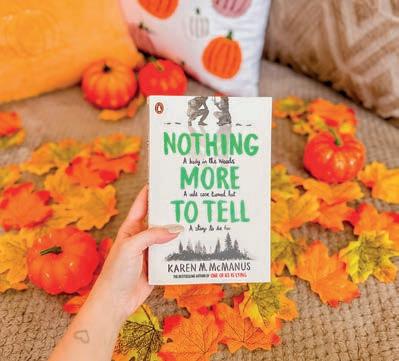
@paperbacksandpurrs
12k followers
A hamper of books from this issue valued at R1 000 is up for grabs to one lucky reader. To enter, scan the code using your phone camera, or visit www.penguinrandomhouse. co.za/competitions. Ts & Cs apply. Entries close 30 April 2023.











Lessons in Chemistry by Bonnie Garmus When Chemist
Elizabeth Zott nds herself a reluctant TV star, she uses her platform to dare the women of 1960s America to challenge the status quo. A page-turning and satisfying tale.
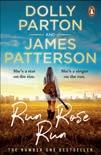

Run Rose Run by Dolly Parton & James Patterson
A thriller about a young singersongwriter on the rise and on the run, who’s determined to do whatever it takes to survive. A novel glittering with danger and desire.
Jennifer Platt completely immerses herself in the book world of reading and reviewing for a living, heading up the dynamic Sunday Times books team as editor. Here are some of her favourite reads.
Again, Rachel by Marian Keyes

There are people who are masters of their craft and Keyes is one of them. Plenty of books are marketed as funny, insightful takes on women and their relationships and some of them hit the mark, but Keyes takes her novels to a whole other level.
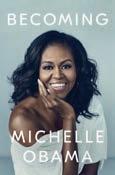



Power of Fun by Catherine Price
Science journalist Price argues that fun will lead to happiness, and includes a practical plan for how to incorporate more of it into our daily lives. Eye-opening and packed with useful advice.

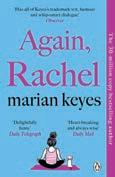

Becoming by Michelle Obama
We all need our heroes, and Ms Obama is mine. I loved getting to know her story, from her time living in the notorious South Side of Chicago to becoming the most hardworking and beloved Former First Lady of the United States.
The Theory of Flight by Siphiwe Gloria Ndlovu
This extraordinary novel won the 2019 Sunday Times Literary Award for best ction because it is ingenious. It was surprising how easily I was swept into a world where the personal and the political take centre stage in a book dotted with magic realism, that also masterfully examines the post-colonial moment in an unnamed Zimbabwe-esque country. Thank goodness this was not a once-o , as Ndlovu has subsequently written two other dazzling books that make up the trilogy – The History of Man and The Quality of Mercy



To read more of Jennifer’s reviews and columns, visit www.timeslive.co.za

Sihle Khumalo has travelled all over Africa getting to know the people. But it’s South Africa’s history that bewitches him, and for his latest book, he started o by looking into the history of place names – but ended with a lot more stories to tell.

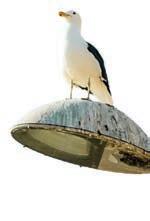




What is it about South African history that intrigues you?
The country’s history is complex. As an example, if I were to ask, ‘When did South Africa gain its independence?’, what would your answer be? Will it be 1910 when we became a Union? Will it be 1961 when we became a Republic? Or will it be April 1994, when all races could vote in the general elections? It is that complicated history that means our modern day challenges have a degree of knottiness to them.
And what intrigues you about South African people?
In Milk the Beloved Country, I state that sometimes I do not understand (some) South Africans. At times I think we were bewitched. Sometimes I feel we are too trusting and, with respect, naïve. Like, how do you explain that the country is going down the drain in front of our eyes and yet a sizeable portion of the population still obsesses about sports week after week?
















On your adventures through Africa, getting to know the people and their stories. What is the one thing that stands out?




Generally speaking, poor people are the most hospitable and giving, and rich people are full of shit. Let me rephrase: rich people are sometimes snobbish and self-conscious.


the


Country is out now.







What unsuspected little gems did you come across when researching this book?
Some of the placenames fascinate me. Did you know that there is city in South Africa named after a horse? A dead horse, at that! And then there are towns that were named after governors, such as Somerset East and Somerset West, which were named after Lord Charles Somerset. A little known fact is that Somerset’s eldest brother, Henry Charles Somerset, got a town named after him. The latter’s title was the Marquis of Worcester. Somerset’s father, who never even visited South Africa, has not one, not two but three towns named after him.
Should we not just accept that milking the cash cow is the way SA works?





Hell no! We as citizens are not vocal enough. These corrupt politicians know that, amongst other things, we move on too quickly from issues that matter. South Africans have a very short concentration span. We talk about a huge scandal for a day or two and we soon start obsessing about possible sport results at the weekend. Besides being distracted by sport, our justice system is not as e ective and e cient as one would love it to be. At times I feel like even old coal-powered steam engines are far more e cient than our lacklustre justice system.
Join Peppa and her family on their funny, action-packed adventures!


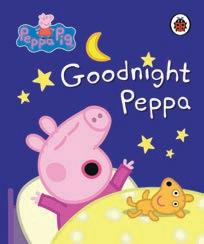


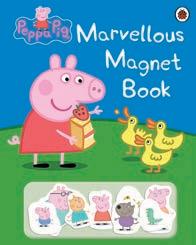


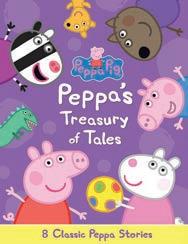


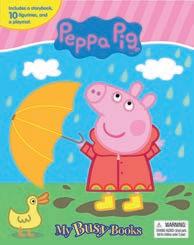





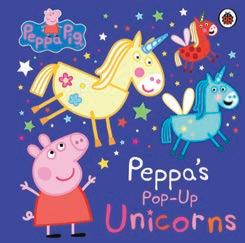


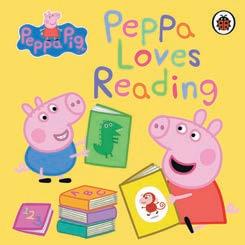



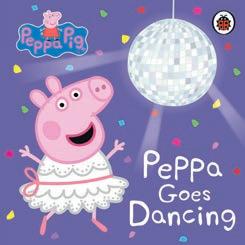

Sarah Graham began her career in food with her blog, Bitten, in 2010. Since then, she’s written six cookbooks, and starred in her very own cookery show. Her new cookbook, Good + Simple, is a return to simple, old-fashioned cooking. She chatted with Lauren Mc Diarmid about simplifying our approach to cooking, the stories behind the food we eat and how anyone can get around a busy schedule and prepare nourishing and tasty meals.

“Cooking from the heart means whipping up so much more than just a meal. It inspires us to listen to our body and give ourselves – and those we’re cooking for – the love and care we truly deserve through a healthy, nourishing dish. It can nurture our heart and mind, too, evoking memories of where we were when we last enjoyed that dish, and with whom. It reminds us that food is a three-dimensional thing that has the ability to completely change the way we feel.
I love the stories and the emotions behind a recipe. It’s helps give context to why something’s been prepared the way it has, and why it’s a favourite. I’ve dotted stories like these throughout my new cookbook, Good + Simple; stories from my own treasure chest of memories that inspire me and add a dash
I want to inspire people to revisit old memories with food, and create new ones.
of colour to the recipes, such as my great aunt’s three-ingredient cheese mu ns, which have been a tea-time treat in my family for as long as I can remember. I hope that by sharing these snippets from my own life, I’m encouraging my readers to reach inside their own memory bank, and hopefully inspiring them to create new unforgettable moments with food ideas they’d love to try out themselves and share with the people who are most special to them.
My style of cooking is mostly plant-based. One of my favourite food writers Michael Pollan said in his book, In Defense of Food, “Eat food. Not too much. Mostly plants,” and I completely agree with that. It comes back to old-fashioned principles of eating food that is simple, colourful, for a variety of nutrients, and as close to its natural state as possible. From the earth and close to the earth.
With Good + Simple I really wanted to include recipes that focus on celebrating vegetables and the abundance of nature. I wanted each one of them to be as simple as possible; to inspire the everyday cook to see ingredients in a new light, but, at the same time, make them accessible for anyone who’s just interested in a more plant-based diet. e book is lled with the recipes and ingredients that I love, which has always been my mandate for deciding what gets included: food that I love to eat and that I want to share.
Of course, with that said, it’s hard to pick favourites! One of the dishes my family and I enjoy most weeknights are what I call ‘bounty bowls’. ey are a simple mish mash of wholegrains and yummy salad ingredients, that are super quick and easy to throw together. My kids also love a frittata for dinner, which is really simple, but such a lovely healthy family supper. And of course, pasta. Pasta is de nitely my rst love, and a pesto pasta especially is always a very welcome friend in the house.
e words ‘good’ and ’simple’ really epitomise my approach to food. One of my favourite little habits is simplifying recipes. I love to take a recipe that has ten steps and see how I can bring it down to ve, using one pot instead of three. It slots in perfectly with my goal of dialling back and slowing down. In the last few years, I’ve gotten so over being busy for the sake of being busy, feeling overstretched and cooking food that’s unnecessarily over-complicated.
But, as a busy mom, I know it’s never straightforward. ere’s always loads going on! Time is of the essence, and no matter how simpli ed the process, it can still sometimes be a challenge to put out a tasty, nourishing meal night after night. I’ve got two main techniques I use to try get around this.
e rst is planning a menu. It can take you 15 or 20 minutes to sit down and write it out for the next week (or whatever time period works best), but then you are done with the stress of coming up with dinner ideas. It also means you only have to do the shopping once a week, with an organised shopping list, as opposed to panic-buying on your way home from work. It just makes

SNEAK A PEEK
Turn over for some of Sarah Graham’s favourite recipes from GOOD + SIMPLE
things so much more relaxed and enjoyable –and saves you loads of time! A bonus to this is that you’ll also save on food costs.
My other time-saver is batch cooking. I’m a huge fan of batch cooking, possibly because I grew up on a farm, and my mom couldn’t get to the shops every day, or even every week. I have a motto that I like to use, which is, “Cook once, eat twice”. If I’m going to make a bolognaise, and it’s going to bubble away for three hours and take lots of love and e ort, I’m going to make a huge bolognaise so that I can freeze extra for those days when it’s just too challenging to get to the stove. at said, I still adore spending time in the kitchen, and having the time to potter around and experiment. ere are few things quite as enjoyable to me as cooking without the rush – even if it’s something simple like baking a loaf of bread – and coming up with new ways to tackle old favourites. en, of course, sitting down to feast around a full and happy table.
Ultimately, my love for food has brought me to where I am today. I couldn’t have imagined back in 2010, when I started my food blog, that I would be here now, coming out with my sixth(!) cookbook. It’s been one of my greatest, yet most rewarding, challenges, and it’s been seeing my recipes inspiring people to get cooking that has made it the most worthwhile journey.”
From Sarah Graham’s new cookbook, Good + Simple, come these splenderi c
recipes to make your next brunch a winning a air.
MAKES 9–12
READY IN: 30 minutes
“When I discovered that breakfast crumble bars were a thing, I could have wept with joy. As you might already know, a good old crumble is one of my very favourite things to eat and now we can turn them into nifty little squares for lunch boxes or on-the-go snacking.”
½ cup rolled oats
1 cup self-raising flour
½ cup dark brown sugar or coconut sugar
½ cup chopped pecan nuts
½ tsp ground cinnamon
½ cup (115 g) butter or coconut oil
1 cup 3-ingredient Raspberry-chia Jam or any berry jam
VEGANFRIENDLY
Preheat the oven to 190ºC and line a 20 × 20 cm baking tin (or any baking dish of similar size) with baking paper.
Use your ngers or a food processer to mix all the ingredients together (except for the jam) until crumbly. Transfer ¾ of the mixture to the baking tin and press down using the back of a spoon.
Spread over the jam, then top with the remaining crumble mixture and bake for 20–25 minutes, or until golden. Cool in the tin before cutting into bars.
“If we nd ourselves with an unhurried Sunday morning, this is our favourite-favourite family breakfast. Rob usually doubles the recipe and gets two pans on the go (and most of our other kitchen utensils!) to make as many of these as he can. Then we greedily gobble them topped either with the classic combination of lemon juice and cinnamon sugar, or lashings of Nutella and sliced strawberries and raspberries.”
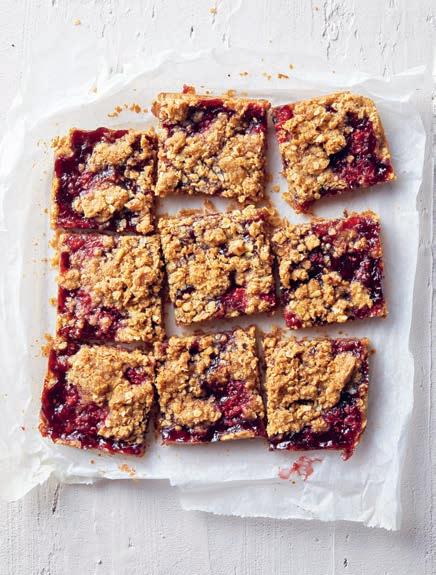
READY IN: 45 minutes MAKES about 15
3 Tbsp butter, melted and slightly cooled, plus extra for cooking
1 cup plain flour
1 Tbsp castor sugar
Pinch salt
1 cup milk
¼ cup water
2 eggs
1 tsp vanilla extract or essence
Whisk all the ingredients together until smooth (use a blender if you like).
VEGETARIANFRIENDLY
Add a little extra butter to a non-stick pan and swirl it around until the pan is well coated. Pour in ¼ cup of the batter and swirl the pan again, making sure the batter spreads out as thinly as possible. Cook for 1–2 minutes, or until the underside is golden. Then, turn over and cook for just less than a minute. Transfer to a warmed plate and cover with a clean tea towel to keep warm while you make the rest.
Wipe the pan clean using paper towel. Repeat with the remaining mixture.
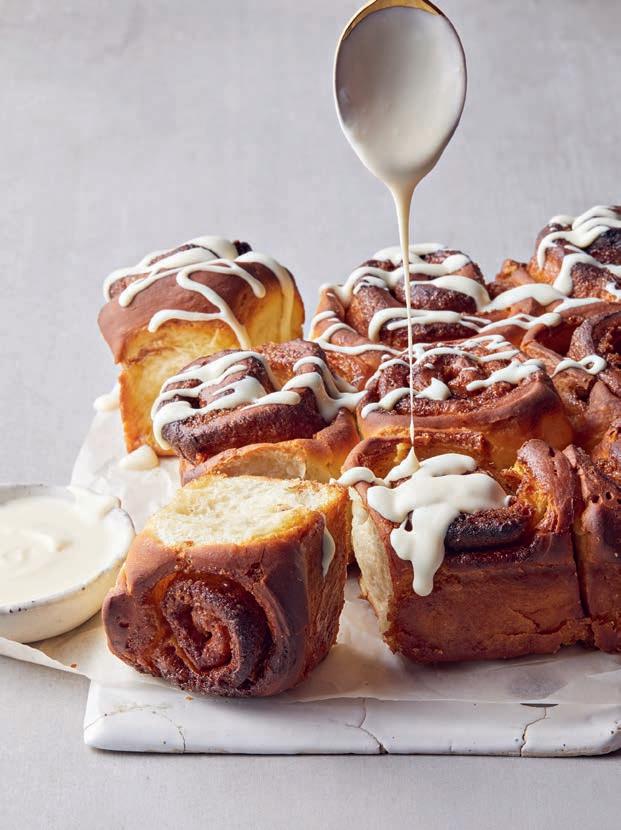
VEGETARIANFRIENDLY
FOR THE DOUGH
1 cup milk
3 Tbsp butter (room temperature)
2 tsp instant dry yeast
3 Tbsp castor sugar
2 eggs, lightly whisked
3 cups plain flour
½ tsp salt
FOR THE FILLING
½ cup dark brown sugar
1 Tbsp ground cinnamon
3 Tbsp butter (room temperature)
½ cup toasted and roughly chopped pecan nuts
FOR THE FROSTING
1 tub (250 g) cream cheese
½ cup icing sugar
2 Tbsp maple syrup or milk
1 tsp vanilla paste
Warm the milk and butter together in a saucepan over low heat until the butter has just melted (it should be warm, not hot). Remove from the heat, pour into a large mixing bowl and add the yeast.
Add the castor sugar and eggs, and whisk gently until combined. Sift in the flour and salt, and mix with a wooden spoon until the dough comes together in a rough ball. Transfer to a lightly floured surface, or a stand mixer with a dough hook attachment, and knead for 5 minutes, or until smooth and springy. Add a little extra flour if needed. Cover the bowl with a damp tea towel and leave in a warm place to rise for 1 hour, or until doubled in size.
Roll the dough out on a lightly floured surface into a rectangle about 30 × 20 cm.
Whisk together the lling ingredients in a mixing bowl until smooth. Spread the mixture evenly over the rectangle of dough before rolling tightly into a log, along the longer side. Trim the ends of the log to neaten, then cut into 2–3 cm rounds. Place the rounds of dough in a lightly greased and lined 20–25 cm square baking tin. Cover again with the damp tea towel and leave to rise for another 45 minutes. You can prepare the dough ahead of time – just cover and refrigerate overnight, then leave to rise the following day.
Preheat the oven to 180ºC. Bake for 25–30 minutes, until just golden. While the rolls are in the oven, prepare the frosting. Whisk all the frosting ingredients together until smooth.
When the rolls are ready, remove from the oven and allow to cool for 5 minutes. Then, drizzle over the frosting and serve warm.

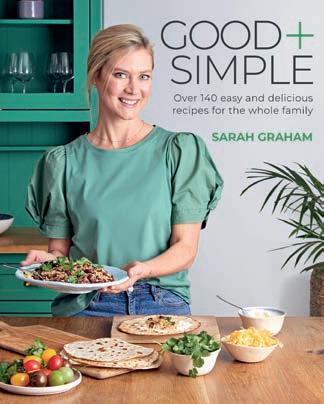
+ Simple is out now.

Why go through the wringer if you aren’t going to put it in a book?
Stuart MacBride writes about how an idea he’d sat with for 13 years nally found legs in the dark humour of the Scottish weather system.
“I’d love to be able to point to a single point of inspiration when I’m asked where a book came from, but the truth is that I’m a magpie (albeit a large, hairy, somewhat-tubbier-after-lockdown [though still uncannily sexy], Scottish one). All my novels are nests constructed from crisp packets and stolen keys, bottlecaps and broken glass.
e Dead of Winter (the book I’ve been instructed to shamelessly plug here) is no exception. Back in 2009 I was doing research for another one of my books, talking to police o cers about how they manage sex o enders who’ve served their time. ey’re not just turfed out the prison’s front door with a cheery wave and a polite reminder to behave themselves – they’re released on licence and subject to control orders, monitoring, and regular evaluations. Which is where the O ender Management Unit come in. I was shocked by how many people each of these o cers had to deal with. eir caseload is huge, and while some o enders only require the occasional visit to make sure they’re complying with their release conditions, others need to be seen every single day.
It sounded like soul-destroying work. It got me wondering if there was another way to go about it. What if you could take the worst o enders from all over Scotland and put them in one place? A little village all of their own. Somewhere they could live a reasonably normal life with no risk to, or from, the general public. Because although there would be lots of rules and regulations, surely it’s better to live in what’s essentially a comfy open prison than have to face angry mobs every time the red-top tabloids found out where you live.
I liked the sound of that. It was an idea with ‘legs’. But that wasn’t the book I was writing at the time, so the setup was duly scribbled

on a Post-it note and ceremoniously added to Stuart’s Great Big Whiteboard Of Doom!™ where it languished for the next thirteen years.
Let’s call that the ‘stolen keys’.
e ‘broken glass’ arrived during the winter of 2020/2021. Up here in the northeast of Scotland, it was bloody horrible. e worst winter in over a decade, with chest-high drifts of snow, blizzards that didn’t seem to stop for weeks, howling winds, and freezing temperatures (on one delightful night, it hit minus eighteen). at on its own would have been bad enough, but about two days into e Winter From Hell, my wife, Fiona, went ‘o the legs’, as we say at Casa MacBride, with two slipped disks, leaving me to look after the cats, hens and horses, all on my own. Now, Stuart does not like horses. Horses worry and alarm Stuart. ey’re too big and they stand on people and squish them and bite them and … lots of other sinister stu . And the buggers are a hell of a lot of work, most of which involves moving Very Heavy ings. In horrible blizzardy conditions. With lots and lots and lots of swearing.
And, if that wasn’t enough: the heating oil ran out, because the oil company had left it too late to top us up. And now we were snowed in, so they couldn’t get to us. And we were running out of food. And there was a pandemic on. And it was cold, and di cult, and exhausting, and a thoroughly miserable experience. And there was no way I was letting all that su ering and e ort go to waste – it was going in a book.
But I still needed my bottlecaps and crisp packets. e former popped out of the aether one lunchtime, while I was noodling about the kitchen, making fancy-pants ramen. ere was a programme on the radio about Queen Victoria’s vast bloomers being sold at auction for an obscene amount of money. It inspired

me to go warbling o into Victoria, nding phantasmagoria in the Waldorf-Astoria and the Mines of Moria. I know it’s not pretty, but that’s how my mind works.
My mind then decided that Victoria would make an excellent brand-new character for a book. Only instead of being a large queenly person, she’d be a big, strong farmer’s lass, with the nickname ‘Bigtoria’. Bigtoria would be a really strict (and kinda scary) detective inspector, and she’d have a sidekick (as every detective inspector must), but this sidekick wouldn’t know anything about her (because he’s new), and he’d be called Edward (a nice normal name for a nice normal person).
We all know that ctional detectives without a ctional crime to solve aren’t worth the Post-it notes they’re scribbled on, so they needed something to investigate. Finally, it was time for those shiny, shiny crisp packets. I have a recurring theme in my work involving really nasty old people. It might have something to do with the fact that in a lot of ction, old people are portrayed as doddery benevolent types who bake cakes whilst dispensing endless cups of tea, Werther’s Originals, and dollops of sagely wisdom. Or they’re victims to be buried. Or a nuisance to be ignored. But I always wonder: what do writers think happens to really nasty young people? Do they hit their late sixties and get issued with false teeth, a bus pass, and suddenly become nice? at with knitting comes kindness? at cardigans breed compassion? No: horrible people remain horrible, they just get more wrinkly. at gave me Marky Bishop – a gangster of the worst kind, who’s spent the last twentyve years in prison for killing someone, then cutting their body into bits with a circular saw. But he’s eighty-two now and dying of lung cancer, so they’ve given him compassionate release. Trouble is, because of his gangland past and the fact that someone might well want revenge for their dismembered excolleague, the authorities couldn’t just chuck Mr Bishop out of prison and hope for the best. ey’d need somewhere safe to put him.

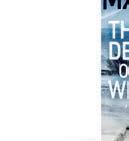
Cue a swift visit to Stuart’s Great Big Whiteboard Of Doom!™ and a hunt through the Sticky Post-it Library Of Ideas at Might Come In Handy One Day, because I was sure



I’d added something to the collection thirteenodd years ago that might help. And there it was: a town for criminals.
It didn’t take long to weave my shiny objects together with twigs and feathers and bits of dead grass into Glenfarach – a sleepy little snow-dusted village, nestled deep in the Cairngorms, populated with murderers and thugs and sex o enders, all doing their best to rub along together, keep their noses clean, and not get thrown out into the big bad world, as the worst winter in a decade comes sweeping down the glen, ready to smother everyone.
Seemed logical to me that somewhere like Glenfarach could only maintain its equilibrium if everyone played by the rules, but of course we live in a world where governments are obsessed with cutting expenditure. It might be easy to manage 200 o enders if you’ve got twenty or thirty police o cers on site, a good surveillance system, and a full social work team, but it’ll be a lot more challenging when the budget’s slashed, vital equipment’s not being repaired or replaced, and only four o cers remain. en that equilibrium becomes extremely wobbly, liable to collapse if someone gives it a shove in just the wrong direction.
One of the things I enjoy the most about being a writer is setting up situations like these then guring out exactly what that shove looks like, who gives it, and how bad things will get as it all comes crashing down. With the usual answer being: very.
Of course, once the nest is made, you’ve still got to turn it into a book. I’ve developed a habit over the last seven years of doing my rst drafts as screenplays – and I know that sounds all, ‘Take me, Hollywood, you gorgeous beast!’ but it’s a very immediate way to build the book – focusing on the action and the dialogue. en, once I’ve nalised that with my editor, I go back to the start and adapt it into a full-blown, big-boy-pants-wearing novel, concentrating on giving you, the lovely reader, an experience that’s as close to the main character’s as I possibly can. Doing my best to get you seeing the sights, hearing the sounds, and smelling the smells. And, for this book, feeling the overbearing weight and cold and horribleness of having to do everything in a howling blizzard.

Only with fewer horses.”
Author Costanza Casati on bringing to life a Greek legend in her novel, Clytemnestra.
“One of the things I loved the most about writing Clytemnestra was bringing to life a female character who is ambitious and loyal, powerful and beloved. I fell in love with this character 10 years ago and wanted others to fall in love with her too. Clytemnestra has been portrayed as an adulteress, a jealous, power-hungry ruler and murderess for centuries, so I really enjoyed playing with these stereotypes and peeling them away to show the woman under them.
One of the hardest parts (which was also incredibly fascinating) was writing the more well-known characters from the myth in a way that felt both fresh and true to the sources. Helen and Odysseus, for instance, are incredibly famous, but I felt like I needed to write them in a way that felt familiar but also unexpected. e same challenge obviously came with the plot. For the people who know the myth, they already know how Clytemnestra’s story plays out, so how do you make it interesting and surprising? I tried to bring to light elements and details that were already hidden in the sources and play with them a little bit. Finally, one of the things I loved the most while writing was exploring Clytemnestra’s family dynamics.
ere are two kinds of research I like to do.
ere is the more practical, speci c kind, which I do in parallel with writing a scene: Which towels did they use? Was soap a thing? Which frescoes were common in Mycenae? What did a typical meal look like in Sparta? And then there is the ‘cultural’ research, which you must do before writing a novel, and which, in my opinion, is essential for writing historical/ mythical ction. It was very important for me to truly live inside my characters’ heads, experience the world through their eyes. So,

I fell in love with this character 10 years ago and wanted others to fall in love with her too.
for instance, a more broad, ‘cultural’ research question would involve things such as: How was guilt perceived in Mycenaean Greece? Did the Greeks fear death? How were women treated in Sparta? Did forgiveness exist for these people? ose are things that must be woven seamlessly into the narrative, but they must also be clear to a contemporary reader. at balance, between re-creating the way in which ancient people thought, and making it accessible to contemporary readers, is the most important thing for me.
I would absolutely call this a feminist retelling. ‘Feminist’ because I wanted to write the story of a woman who took part in the action, whose narrative is as epic as the ones of the men and heroes. Besides, Clytemnestra isn’t the only powerful woman in my novel: it was essential to me that I wrote a story with a cast of female characters that were clever and complex, awed and unforgettable.
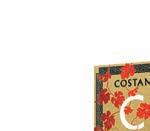


e women of the Greek myths are incredibly heroic – think Alcestis, Antigone, Ariadne, Circe – and yet throughout the centuries they have been burdened with cultural and ethical codes that make them helpless victims, or, in the case of Clytemnestra and Helen, misogynist archetypes: murderesses and lustful whores. Now is the time to retell their stories.”
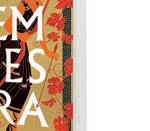

Clytemnestra is out in April.
A blazing novel set in the world of Ancient Greece and told through the eyes of its greatest heroine, this is a thrilling tale of power and prophecies, of hatred, love, and of an unforgettable Queen who ercely dealt out death to those who wronged her.




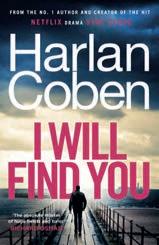


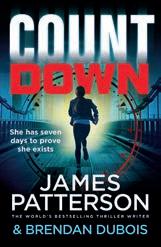
Detective Lindsay Boxer put serial killer Evan Burke in jail. Reporter Cindy Thomas put Burke on the bestseller list, in her book about the case. An obsessed fan is studying every detail – and committing fresh horrors that carry Burke’s signature. Now Lindsay’s tracking an elusive suspect, one who’s penning a deadly playbook featuring Cindy’s name in bloodred ink. Another pulsepounding addition to the Women’s Murder Club series.
Fforde
It’s 1964 and, at her mother’s request, aspiring cook Meg agrees to help a small hotel in Dorset with an important banqueting event. Justin, the son of the hotel owner, however, seems set on making the kitchen his own domain. Infuriated, Meg is determined to keep cooking – and soon sparks between them begin to fly. Will their di erences be a recipe for disaster? After all, the course of true love never did run smoothly ... A feel-good romance.
David is guilty of murdering his son, Matthew. Only, he didn’t do it. Five years into his sentence, he makes an alarming discovery. His wife, Cheryl’s sister has a photograph that a friend took on vacation at a theme park. The boy in the background seems familiar – and even though David realises it can’t be, he knows it is. It’s Matthew, and he’s alive. A page-turner that will keep you guessing until the very last page.



Widower Kane Black remains ruinously married to his late wife, Lily. Grief has hollowed him, until he sees a woman with his wife’s inimitable beauty on Manhattan’s streets. He whisks her up to his towering penthouse, where Lily’s memory is a possessive, beguiling force. He unquestioningly accepts the return of his beloved long-dead wife, but she is not the only woman in his life – and those other women are circling him, demanding he do right by them. The rst book in the Blacklist series, written with Day’s trademark emotional intensity, scorching sensuality, and powerful storytelling.



A botched eld operation reveals some dark dealings between an o cer’s superiors and an informant, including a plot that could kill thousands of Americans. Knowing that her leadership is corrupt to the core, an undercover CIA o cer is forced to give up her identity and work from the shadows. But will she get the truth out into the light before losing her identity, her history, her family? The second heartstopping thriller in the Out of Sight series.




















Author Jenny Jackson on her debut, Pineapple Street, a witty exploration of family, money, love and heartbreak.
What was it that inspired you to write Pineapple Street?
My little family of four spent much of the pandemic living with in-laws; my husband’s parents in Connecticut, and my parents in Massachusetts. It was amazing in ninety-nine ways – they helped with Zoom school and childcare, we had movie nights and long hikes in the woods – but it was also really funny to see how di erent our families of origin sometimes felt. I tease my in-laws about their plants (I think they must have two hundred plants in their house. ey take pictures of them and call them their “grandbabies”) and I know my husband is mysti ed by my parents’ crazy art collection ( ey have tons of friends who are painters and some of their art – like the stu featuring naked people and cats – is pretty weird). So, I wanted to write about that funny feeling of being an outlaw among your in-laws; that feeling that no matter how long you are married, you’ll never really get the plantthing or the naked-people-with-cats-art-thing – you’re never really one of them.
Each member of the wealthy Stockton family navigates their generational wealth in a di erent way. When you created these characters, how did you develop their unique relationships to the family fortune? Darley, the eldest, was born into money, but gave up her inheritance when she married a successful Korean-American investment banker and refused to have him sign the pre-nup, locking herself out of her trust fund. Darley is a romantic and she has always had some shame surrounding her wealth. Sasha is the outsider, a middle-class girl from New England who has married into the family, moved into their ancestral limestone on Pineapple Street, but nds herself bewildered



I wanted to write about that funny feeling of being an outlaw among your in-laws; that feeling that no matter how long you are married, you’re never really one of them.





by the rites and rituals of the one percent. Sasha likes to think that she is immune to the allure of money, but that allure is insidious. And Georgiana is the baby of the family, the Gen Z social conscience who grew up rich and spoiled and is suddenly seeing herself for the rst time and questioning the morality of extreme wealth in a world with extreme poverty. I am very aware that Georgiana’s age means she has a really di erent attitude about money than the other characters. I am what we like to call a “geriatric millennial” and so I wanted to explore the rift between people my age and people a decade younger.
When middle-class Sasha marries into the family, she becomes a keen observer of the Stocktons’ norms and rituals. How is the role of an in-law like the role of a novelist? You know how when there is a gas leak in a house people who have been inside all day can’t really smell it, but then if someone walks in from outside the smell is overwhelming? I think the in-law is that person walking in from outside. ey see things that are totally ingrained, that have developed over decades, totally whack-a-doo behavior that has come to seem normal in a family. A novelist should operate in the same way, noticing everything, being both a part of the household but also seeing things with fresh eyes (or nose).
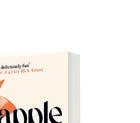
What do you hope readers take away from the novel?
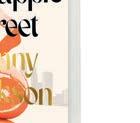

Pineapple Street hits shelves in April.
I’d like for readers to feel a sense of joy. I hope they will see that these very awed, occasionally ridiculous people are a family bound by love, all doing their best to evolve in a changing world, all trying to be good. I have a soft spot for even my most spoiled and ill-behaved characters, and I hope you will too.






it Anymore
A book about a mother kicking butt is Fran Littlewood’s triumphant debut.



“Amazing Grace Adams is the story of a 45-year-old woman, Grace – a polyglot and former TV star – who’s lost everything. She’s estranged from her husband and child, just lost her job and, according to an article she’s read in the newspaper, at the unhappiest age she could possibly be. She’s at breaking point, where normal rules no longer apply, and so, on the hottest day of the year, Grace abandons her car in gridlocked tra c and sets out, on foot, across London, to try and win back her estranged daughter on her sixteenth birthday.
Grace is on a quest to demonstrate some erce mother love, and no thing or person is going to stop her. As she journeys across London, she rips up the social contract; she says and does the things we only dream of saying – to the woman in the chemist who strategically queue jumps, to the window cleaner up a ladder who catcalls her, to the toxic school mum who humble brags at her … She’s having one of the worst days of her life, she’s mad as hell and she’s not taking it anymore.



At a time when there’s a pervasive cult of youth – where a narrow de nition of beauty in women is prized above all else, and we’re supposed to adhere to an impossible standard – reaching this midpoint is no easy ride. Ambushed by age and the perimenopause,



Grace is on a quest to demonstrate some erce mother love, and no thing or person is going to stop her.

























Grace’s body and mind are betraying her – her face is collapsing, her lips seemingly disappearing overnight – and she’s pretty bewildered by it. It’s a huge and time-sapping preoccupation for lots of women in midlife, because the visible signs of ageing in women are seen as culturally, societally unacceptable. It’s another massive double standard, of course – men with ‘salt and pepper’ hair are ‘silver foxes’ after all, and so on … In terms of menopause, it’s something people haven’t been talking about until very recently. As Michelle Obama has said, it’s something that fty per cent of us will go through, and we’re acting as if it’s not happening.
Grace is at a very similar stage in her life to me and many of my friends, and the idea for the novel started with her. I wanted to write a woman in the middle of her life, but I wanted to write the women around me as they actually are. So, a correction to the prevailing narrative that women at this point in their lives are downtrodden and boring and we ought to feel sorry for them. I felt so strongly I didn’t want to misrepresent these women – I wanted to write something that wasn’t vanilla or sanitised. I also wanted to convey the humour and the hope. Because Grace isn’t over the hill, she’s not past it. True, she’s encumbered – life really has thrown a lot at her – but she’s still as brilliantly kick-ass as she ever was! (She’s just also quite tired…)”

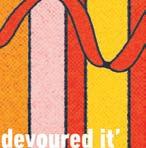




Magic happens in the space between. For author Sven Axelrad, this lies somewhere between accounting and writing.
“When I tell people that I’m an accountant I usually get a look of polite surprise. Maybe it’s the tattoos, my posture, the faint smell of co ee and unrequited hope on my skin. Whatever the reason, I sincerely love everyone who has ever raised an eyebrow and said, ‘An accountant? I thought you were an ageing barista or something.’ Of course, there’s nothing wrong with accountants as such –lovely people, well, some of them – roughly the same ratio as you would nd elsewhere.
e reason I love the people who look surprised is because I’m a little surprised too. How did I end up spending my days working with numbers when, for most of my life, I’ve been convinced that if answers do exist, they exist in prose? It would be a lot easier for me if I believed in a world explained by numbers. Numbers make a lot of sense. Not words. Words are unruly, di cult to arrange, easy to misplace. ey are quantum in nature. ey get lost in the cushions.
I was depressed for a while. Truly and deeply sad. I saw myself as split in half. Never quite an accountant. Never quite a writer. During the day, the ghost of the writer haunted the accountant. At night, they switched places. I wrote a lot during this period, at least three novels. I existed this way for years, halved and haunted, until my wife, no doubt tired of living with my ghosts, implored me to choose. Either option was ne, she said. She wanted only that I choose and be happy.

During the day, the ghost of the writer haunted the accountant. At night, they switched places.
enough, fty percent of me agrees with them. We spent a morning walking along the ocean from Sea Point to Camps Bay, talking through the options. I didn’t even realise I was having an epiphany. I suspect that’s how it is with miracles, occurring in small, unsexy ways, unseen all around us. Fast forward ve years and I have a book being published, so you might assume that in the end, I chose writing, but I didn’t. I chose to get organised. e early mornings are my time. I wake clear-headed, shirtless in the Durban heat, the residue from dreams still dampening my skin, ideas gummed in the corner of my eyes, a yorkie supine atop the blankets. I’m careful not to speak. I make co ee (black), my soul oating nearby, tethered to my wrist like a balloon. I put on a playlist (songs chosen with care for the book I’m working on). I have words written on my skin – one for each book I’ve completed. In this way I am becoming a book myself, and, adorned such, I write.

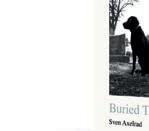
‘Choose writing!’ I hear the spirit of all romantics both past and present say, and, sure

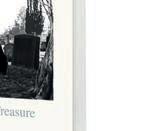
I still know what it’s like to be haunted.
e darkness is always close by; where else would it go? at’s the way things are. Still, these days, there’s a tentative friendship between my two ghosts. We have hashed it out. ey have agreed to haunt me politely.

Buried
If you, like me, are haunted, whether by literature/music/art/sadness or love of any kind, I suggest waking up early or staying up late and making something. at’s it. What you do with what you make is your business. It’s not even that important. Making something is important. Making something is a miracle. Everything else is extra.”
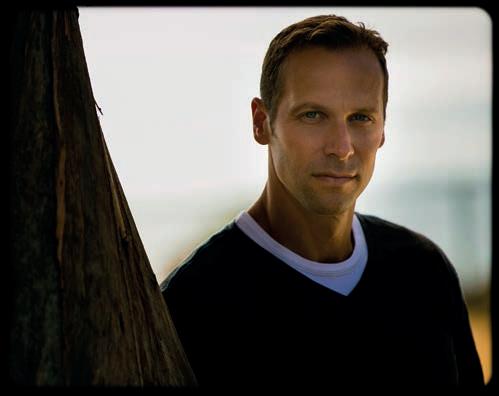
What do you think it is about Evan that appeals to readers?
As Jack told Evan from the very beginning when he was a scrawny twelve-year-old kid: “ e hard part won’t be making you a killer. e hard part will be keeping you human.” e latter is Evan’s curse and his blessing. He is someone who, no matter how dark it gets, will never let go of his humanity.
Does Evan still continue to surprise you at times, even though you’re eight books in?
As an assassin pulled out of a foster home and trained up from the age of twelve, Evan never learned to speak the strange language of intimacy. He’s at ease garrotting a human tra cker in a Muscovite banya, but small talk at the mail slots in the residential tower where he hides under an alias? It nearly undoes him. But he never gives up. He keeps trying to gure out how to live in the real world among real people. His commitment to it, despite the messes that other humans create, never ceases to surprise me.
What’s behind your decision to make the president in The Last Orphan a woman?
I’m used to the kinds of messes made by male presidents in America. I thought the messes a female president would make might look di erent. Victoria Donahue-Carr negotiates power di erently to her predecessor. She keeps a tight team around her and leads with energy and psychologically astute strategy. In e Last Orphan, she needs a mission executed. A nearly impossible mission. She knows the only person in the world who could do it properly is Orphan X. As the most
WHERE THERE’S SMOAK, THERE’S
Author Gregg Hurwitz on the formidable Evan Smoak, a trained government assassin who’s on a personal mission to help those with nowhere to turn, and the bad-ass hero of the Orphan X series.
Evan is someone who, no matter how dark it gets, will never let go of his humanity.
powerful human being on the planet, she is willing to use whatever resources at her disposal to bring him under her control one nal time.
What type of message do you hope to send with Evan and his no-nonsense approach to bad guys? at a man must uphold his code above all else.
Which scene in The Last Orphan is your absolute favourite?
Chapter 52. No question. Neither ght nor bullet in it.
What’s been your most memorable research experience?
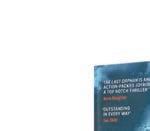



Once I interviewed a hospital tech while he was carving up a cadaver, parting it out for di erent departments. e head went to neurology, the joints to the orthopods, etc. When he was done, he opened a massive freezer door and inside the room were about two dozen corpses suspended by their heads from gure-eight scissor clamps, dangling a few feet o the ground. ey’re stored that way to keep their bodies from distorting, which makes them more useful for medical students. e tech grabbed the next body, slid it out along on a track in the ceiling, lowered it down on the dissection table, and began his work anew.

The Last Orphan is out now.
What are your obsessions at the writing desk?
Words, words, words. And nothing to interrupt me from them.
Ons ken haar as kinder- en jeugboekskrywer, maar Elizabeth Wasserman se eerste roman vir volwassenes is hier. En die hoofkarakter is nie ’n vrou wat haar mond hou nie – selfs al kry dit haar keer-op-keer in die moeilikheid.
Ons ken jou as skrywer van kinderverhale. Is dit ‘anders’ om vir volwassenes te skryf?
Ja. Elke nuwe boek of reeks wat ek skryf moet sy eie stem hê. Met kinderboeke het ek geleer om die verbeelding te stimuleer. Nou moes ek leer hoe om meer aan die verbeelding oor te laat! Kinders glip met gemak oor die grens tussen werklikheid en fantasie, maar “grootmense” is versigtiger. Met Mevrou Smit probeer ek my lesers verlei om in die skoene van ’n protagonis te klim waarvan hulle dalk aanvanklik nie eens hou nie – maar dan, dink ek, raak dit pret.
Jy is ʼn patoloog. Wat neem jy uit jou daaglikse lewe wanneer jy gaan sit om te skryf? En wat laat jy agter?
Dissipline en noukeurigheid. Skryf is ook harde werk, en ’n sekere werksetiek word vereis. Dis lekker, maar dis nie maklik nie. Mens moet deurdruk. Nuuskierigheid is dalk die grootste gemene faktor tussen dié twee wêrelde. Ek is in my aard geneig om te kyk en te oorweeg, en wat ek sien wil ek identi seer en in patrone rangskik. Die skrywery gee ook vir my ’n lekker balans: ek kan al die twak en nonsens wat in my kop ronddryf kanaliseer na my stories toe.


Die plek Arumspoort is ook ʼn karakter in die storie. Wat is dit wat jou na die idee van so ʼn dorpie aantrek?

Ek het op die platteland grootgeword en ek is moeg vir verkeersknope en inkopiesentrums.

’n Dorpie soos Aronspoort gee maklike toegang tot herkenbare karakters, want in ’n klein gemeenskap is almal se rol ontbloot: die polisieman, die bakker en die dominee se vrou. Dit skep die perfekte arena vir ’n lekkerlees-










Die fantastiese

Mevrou Smit is nou beskikbaar.





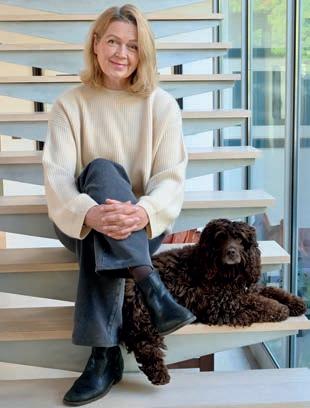
storie. En ja, die dorp is die kern waarom alles draai. Mevrou Smit is op soek na ’n plek waar sy inpas, waar sy hoort. Op die ou einde is dit seker wat ons almal graag wil hê.
Waar het jy vir Mev Smit ontmoet?
Hm. Sy is saamge ans uit mense wat ek ken, in die regte wêreld en in ksie, en dalk ook die idees en verwagtinge wat in die samelewing rondvlieg. Nie dat sy haarself veel daaraan steur nie! Mevrou Smit is ’n weerbarstige karakter, grootliks gebaseer op die alter-ego van al die deugsame mense rondom my.
En hou jy van haar?
Soos ek haar beter leer ken, ontwikkel ek ’n sagte plekkie vir haar, ja. Een van die groot sjarmes van Suid-Afrikaanse mense is dat almal van ons ’n storie het. Ons is ingewikkeld. Mevrou Smit is ook so.
Mev Smit steur haar nie aan konvensie nie – is jy ook so? Enige ander eienskappe wat julle deel?





Ek probeer doelbewus my karakters weghou van my eie lewe. Maar as skrywer word alles wat in jou kop aangaan noodgedwonge blootgelê. Dit is nogal angswekkend. Ek moet die heeltyd oppas vir die beperkings van my eie insig, my eie vooropgestelde idees, en die clichés wat my kop gebruik om makliker te kan dink. Mevrou Smit se reguit manier van optrede is miskien net ’n soeke na hierdie eerlikheid, en ’n poging om ons eerste instinkte bloot te lê en miskien bietjie uit te buit om haar karakter meer lewe te gee. Ons wens seker almal ons kan bietjie meer só wees: diskresie oor die muur gooi en die wag voor die mond afdank.




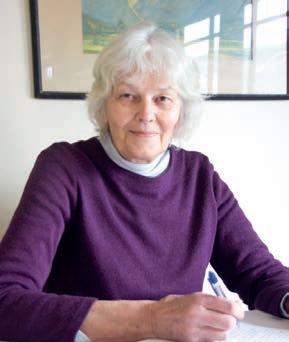

As kind hoor Jeanette Stals ’n storie by haar pa wat haar sou bybly en uiteindelik inspireer.
ommige stories is interessanter as ander. Party mense het in hulle lewe al deur diep waters gegaan, ander het dit miskien makliker gehad. Laasgenoemde het dalk baie gereis, avonture beleef of ander interessante ondervindings gehad. Daar is ook mense wat slegs kan droom van so ’n lewe en al uitweg is om te lees en op dié manier hierdie leemtes te vul.
Om ’n kampvuur, of by ’n tafel wanneer almal versadig is en die ko e of iets sterker in glase bedien word, kom die tonge los en word ons stories makliker oorvertel. Of so ’n vertelling altyd stewig in die werklikheid gegrond is, of sommer net ’n onvervulde droom van die verteller is, dit bly ’n intieme kykie in daardie mens se binne-wereld.
Jare gelede, voor die dae van elektronika, selfs voor TV in Suid-Afrika geland het, het my ouers dikwels tot laatnag, soms selfs dwarsdeur die nag gekuier by familie of vriende wat hulle lanklaas gesien het. Daar was eenvoudig nie genoeg ure vir al die stories wat gewag het om vertel en geluister te word nie.
My pa was vier jaar oud teen die einde van die Anglo-Boereoorlog. Hy het saam met sy ma, ouer boeties en ’n sussie op hulle plaas naby Zeerust gewoon terwyl hulle pa as ’n bittereinder in die veld was. Pa kon met smaak vertel hoe hy en sy broertjies naby die riviertjie op ’n Britse proviand-wa afgekom het. Die kakies was by die water om te bad en toe die kinders agterkom een van die streepsakke agterop die wa is vol bruinsuiker, het hulle skelmpies ’n gat in die sak gesteek; die suiker wat daarúít gestroom het, met die hand opgevang en geëet so vinnig hulle kon.















Dit het lelike maag werk afgegee en hy was van toe af glad nie meer lief vir bruinsuiker nie.
’n Paar dae later was hulle huis afgebrand soos op baie plase gebeur het en hulle is per wa na die konsentrasiekamp geneem.
Op pad daarheen het ’n Engelse o sier vir Pa sjokolade gegee. Hierdie ervaring het ’n groot indruk op hom as klein kind gemaak en natuurlik ook op my toe hy dit vir ons vertel. Ek kon nie anders nie as om dié klein episode netso in te sluit in my historiese roman Die Oseaan Tussenin



Nuusberigte, artikels wat betref mediese, wetenskaplike sowel as ander navorsing is vir ’n skrywer van onskatbare waarde. Ook persoonlike ondervindings, oftewel stories, van wat jyself beleef of van vriende en kennisse gehoor het, verskaf goeie teelaarde vir die skryfproses. Natuurlik word dit nie netso oorgeneem soos wat ek met die genoemde sjokolade episode gedoen het nie, maar eerder sal ’n skrywer alles absorbeer, dit as’t ware weer heeltemal vergeet (soos skille wat op die komposhoop uitgegooi en van vergeet word.) Die onderbewussyn is egter ’n wonderlike gawe. Nadat kompos van alles gemaak is, kan mens ’n eie boompie daarin plant om eindelik weer tot ’n storie te kan groei.

Die oseaan tussenin is beskikbaar vanaf April

My gevoel is dat iemand wat in afsondering lewe, nóg vreugde, liefde, haat, hartseer of mislukking ervaar, of by ander waargeneem het, moeilik daarby sal uitkom om ’n boeiende storie te skryf. Of dalk is ek verkeerd, want die mens is nou eenmaal ’n wonderwese (as ek dié term by Carina Stander mag leen) en miskien werk die muse met elke skrywer op ’n heel ander manier.”
Creativity and innovation comes from having an openminded perspective to seeing what can be done and appreciating opportunities, says Berthold Gunster
in this extract from his book, Flip Thinking, the lifechanging art of turning problems into opportunities.
“Imagine this: you’ve got a great idea, and all you hear are the yes-buts. ‘Yes, but that’s been tried before, and it didn’t work.’ ‘Yes, but shouldn’t we just let it sit for a while?’ ‘Yes, but what if it doesn’t work ...’
All those yes-buts make you feel that every attempt at innovation will be buried in a swampy morass of seemingly sensible objections. And that’s exactly how it works: yes-but thinking takes a closed attitude to life, throwing up restrictions and threats like dragons blocking your path. However worthwhile an idea or argument might be, it’s met with rigidity, which leads to stagnation. ere’s another way: the yes-and attitude. is open-minded perspective emphasises what can be done, appreciating possibilities. With this attitude we see past the dragons to the path forward. e result? Creativity and innovation.
is book is about the transition from a yesbut to a yes-and way of living; from thinking in terms of problems to thinking in terms of opportunities. When we approach a problem with a yes-and mindset, novel solutions can sometimes be surprisingly easy to discover. Looking at a problem from a new angle, even just a quarter-turn, can lead to a big insight, with so little e ort. We don’t have to ght our problems; we can transform them into opportunities. We can make them our allies. e art of turning problems into opportunities can be learned. It’s a type of psychological jujitsu, a technique that I call ‘Flip inking’ (or Omdenken in my native Dutch). Flip thinking not only leads to a solution to an existing problem but, unexpectedly and surprisingly, it can open
When we approach a problem with a yes-and mindset, novel solutions can sometimes be surprisingly easy to discover.
completely new vistas of possibility. As a caterpillar morphs into a butter y, a problem is ip-thought into a beautiful new reality. is leads to a surprising paradox: the more problems we confront, the better.
At its core, ip thinking can improve your life, paradoxically enough, not by avoiding your problems, nor denying them by emphasising only the good like a Pollyanna, but by embracing problems, recognising and accepting pain, loss and want. Flip thinking always starts with acknowledging reality. A pessimist is completely indi erent to how much water there is in the glass; he’ll still just moan that he’ll have to do the dishes again. Why not enjoy the glass of water instead?


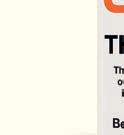
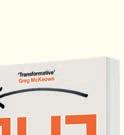


Flip Thinking is out now.

I started the concept of ip thinking in the Netherlands, where I live, in 1997. Since then, my team of actors and trainers and I have put on more than 10,000 theatrical, entertaining and educational workshops on the principles of ip thinking for, altogether, more than 1 million people. Besides performances in the Netherlands, a British-American team of actors and trainers perform ip-thinking sessions in Spain, Singapore, Britain, Germany and France. In total, I have written 12 books about the principle of ip thinking, all of them bestsellers. In the Netherlands alone they have sold more than 1.3 million copies (bear in mind we have a population of only 17.4 million people!). ese books have been translated into Italian, Portuguese, Danish, German and – as you are reading right now – English. e story of ip thinking doesn’t end here. It develops, grows and matures. And I’m proud that you, dear reader, are a part of this journey. Hopefully you’ll enjoy this book.”



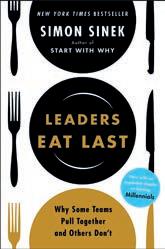
This profound book will show you how to anticipate change, adapt to change quickly, enjoy change and be ready to change quickly again and again. Discover the secret for yourself and learn how to deal with change, so that you su er from less stress and enjoy more success in your work and in life.
Today’s workplaces tend to be full of cynicism, paranoia and self-interest. But the best organisations foster trust and cooperation because their leaders build what Sinek calls a Circle of Safety. It separates the security inside the team from the challenges outside. Sinek shows that leaders who are willing to eat last are rewarded with deeply loyal colleagues who will stop at nothing to advance their vision. It’s amazing how well it works.
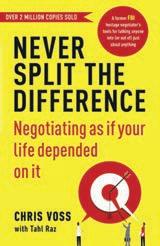

After a stint policing the rough streets of Kansas City, Missouri, Chris Voss joined the FBI, where his career as a kidnapping negotiator brought him faceto-face with bank robbers, gang leaders and terrorists. Never Split the Di erence takes you inside his world of high-stakes negotiations, revealing the nine key principles that helped Voss and his colleagues succeed when it mattered the most – when people’s lives were at stake.
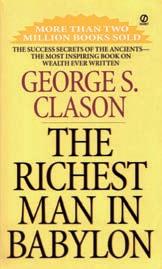

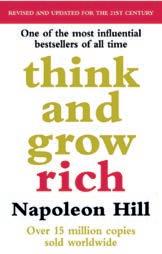

The Richest Man in Babylon by George S. Clason
Hailed as a modern-day classic, this celebrated bestseller o ers an understanding of – and a solution to – personal nancial problems. Based on the success secrets of ancient “Babylonian parables”, it is the most inspiring book on wealth ever written.
After interviewing over 500 of the most a luent men and women of his time, Napoleon Hill uncovered the secret to great wealth based on the notion that if we can learn to think like the rich, we can start to behave like them. By understanding and applying the thirteen simple steps that constitute Hill’s formula, you can achieve your goals, change your life and join the ranks of the rich and successful.


Communication expert Thomas Erikson has dedicated himself to understanding how people function and why we often struggle to connect with certain types of people. In this bestselling book, Erikson will help you understand yourself better, hone communication and social skills and handle conflict with con dence. Surrounded by Idiots will help you understand and influence those around you, even people you currently think are beyond all comprehension.









Unless you learn to accept completely the possibility of an uncertain (random) outcome, says Ross Larter, it will be di cult for you to succeed as a trader. In this extract from his book, The Beginner’s Guide to the Stock Exchange, Larter talks about trading psychology and probability thinking.
our ability to think in terms of probabilities is something that can make or break you as a trader. During your career as a trader, you will experience a wide range of emotions, from fear to anger to confusion, and even over-con dence. Consistent winners execute their trades without emotion. Technical and fundamental analyses are important, but I cannot overstress the importance of the third kind of analysis required to master trading – mental analysis.
Novice traders tend to approach trading with the positive expectation that they will make money. If they didn’t, why would they even bother with the idea of trading?
But what happens when their trades result in a string of losses that go against their expectation? A trader’s reaction gives an indication of what is happening deep down. Loss causes a surge of emotions that may take the form of anger, disbelief or despair. It makes the trader feel as though the market is out to get him or her. While all traders are aware that there is an element of risk, not every trader really accepts this risk, or even entertains the thought that a trade may lose them money.



By contrast, professional traders approach the market embracing the fact that they will encounter both winning and losing streaks, but because they have a strategy that has an edge, they know that over many trades they will end up winning. ey view losses as a necessary expense that comes with running a business.

Novice traders tend to approach trading with the positive expectation that they will make money.
Mark Douglas calls this the psychological gap – the gap between the trader’s assumption that they accept the risk and their fully embracing that risk. e best traders in the world know that every trade is a random event, and a series of losses will not deter them from executing their next trade. Similarly, a consecutive series of wins does not lead them to be complacent and mismanage their risk. e reality of trading is that every trade has an uncertain outcome that is independent of past trades. Unless you learn to accept completely the possibility of an uncertain (random) outcome, it will be di cult for you to succeed as a trader.
Five fundamental truths about the nature of trading can help you embrace risk and uncertainty:
1. Anything can happen.
2. Every moment in the market is unique.








The




Beginner’s Guide to the Stock Exchange is out now.

3. An edge is nothing more than an indication of a higher probability of one thing happening over another.

4. ere is a random distribution between wins and losses on any given set of variables that de ne an edge.

5. You don’t need to know what will happen next to produce a consistent income.


Once you fully accept these truths, you become comfortable dealing with uncertainty and therefore able to trade in the ‘zone’ – a zone where the trader is not fearful of making mistakes or losing money. Money will come in easily as you execute your strategy awlessly.”



Ross Larter
Written for the layperson, in everyday language, this is the guide to help the beginner understand how the market works, and how to use this knowledge to acquire the necessary skills to generate a secondary (and potentially a primary) income by investing and/or trading.

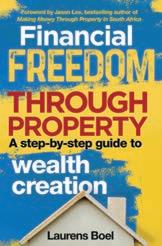
Laurens Boel
Filled with practical tips, insider secrets and case studies, this step-by-step guide explains the risks and rewards of property investing. It also tells the story of how the author became one of the top property investors in South Africa – after being retrenched and going broke.

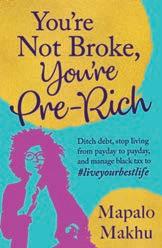
Makhu
If you are a millennial who is trying to gure out how money works, this book is for you. With simple, relatable and sometimes amusing stories about how to manage money on a day-to-day basis, you will learn how to change your mindset about money, get out of debt and stay debt-free, invest your money and, ultimately, live your best life.

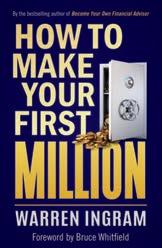
Have you ever wondered how wealthy people actually made their money? Here is a simple, easy-tofollow book that shows how various people have made their money in their own unique way, helping you to nd a method that will assist you in making your rst million and gaining nancial freedom.


Jason Lee
Author and property expert
Jason Lee sets out every step of the property-investing process, including how to nd the right deals, how to negotiate and nance a property, and whether to hold on to or sell a property for nancial gain. It’s the ideal tool to discovering how to make money in property markets.


Ingram
Covering a range of topics, from saving, investing, debt management and buying a house to blunders to avoid, this useful guide provides people of all ages and levels of wealth with practical information on how to improve their nances. In the process, it shows that nancial freedom is possible for everyone.
Struik Nature publisher, Pippa Parker, shares the origins of an exciting new series of books on the Kruger National Park, that are perfect for nature and wildlife enthusiasts.
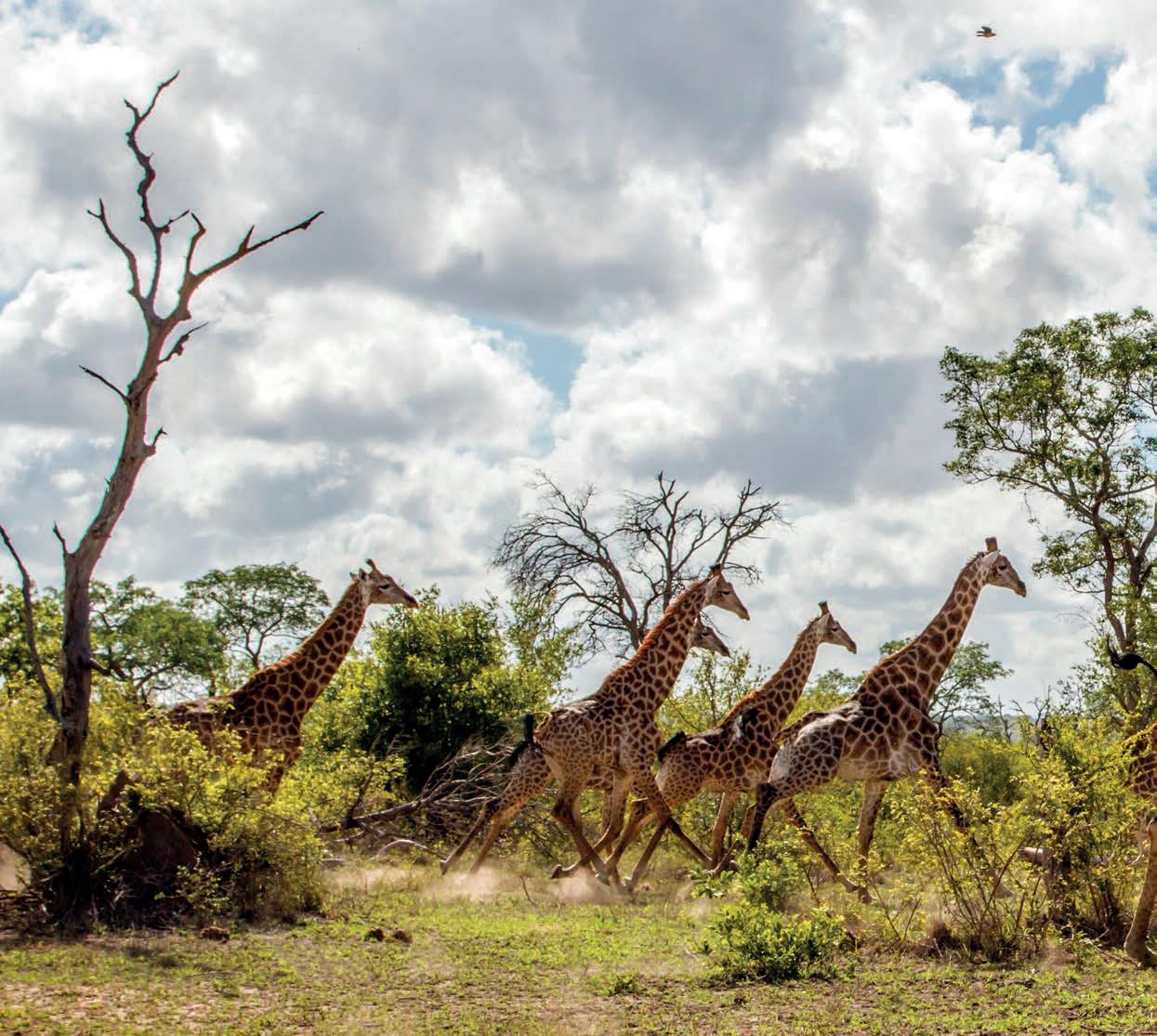


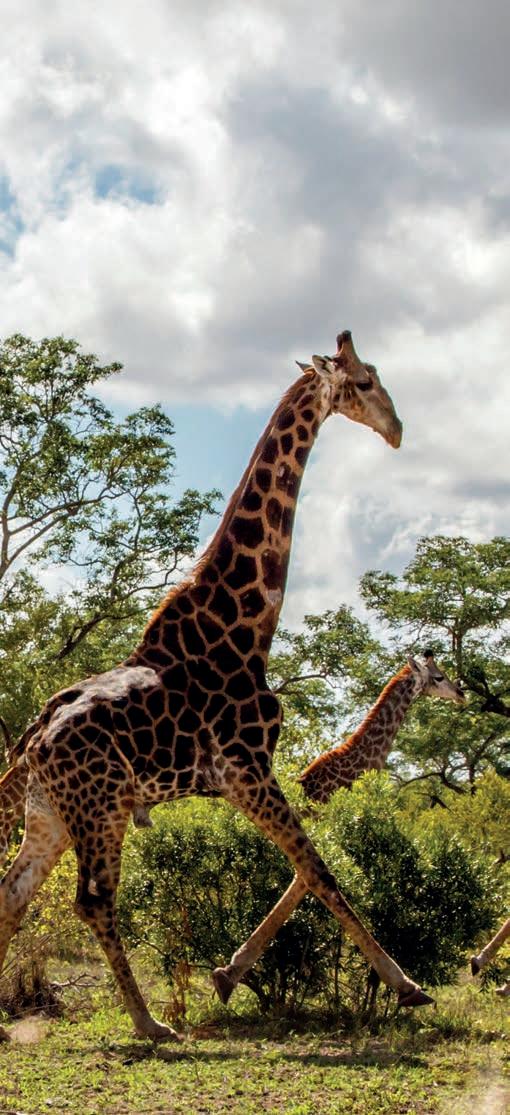

“During a recent visit to the Kruger, I was struck in particular by the magni cent, bountiful and assorted trees throughout the Park. For some reason they became more of a focus on this trip than did the animals and birds. Or perhaps I became aware of them while looking at birds or hoping to spot an elusive leopard snoozing high up on a branch. But the trees seemed more magni cent than ever, and I wanted to know what I was looking at. A search for an easyto-use, simple and non-threatening guide to Kruger’s trees proved unsuccessful – so there and then the seed was sown for what has recently been launched as the Nature Now series.
Before we knew it, we had three titles planned for the series launch. Prof Braam van Wyk was the obvious choice for ‘trees’. Braam, co-author (with the late Piet van Wyk) of Struik Nature’s best-selling Field Guide to Trees of Southern Africa, was eager to take on the task and set to writing the text. He sourced many photographs of Kruger trees from Emmarentia van Wyk (Piet’s widow), holder of Piet’s invaluable collection. Braam also worked closely with SANPARKS Scienti c Services Department to gather valuable information on the distribution of trees according to di erent vegetation zones through the Park.
Trees of Kruger features 80 of the Park’s most commonly occurring or interesting trees. For each tree species there is a full-page image of the tree plus details of the relevant diagnostic features ( owers, fruit, etc). e brief text provides just enough information to assist in identifying the tree and includes useful information on the tree’s uses – for both animals and humans.
The trees seemed more magni cent than ever, and I wanted to know what I was looking at.
Joan Young, a now-retired tour guide who spent nearly two decades as an environmental educator and guide in Kruger, is author of the other two books in the series, Mammals, and Insects and other Critters of Kruger. Joan is passionate about sharing extraordinary wildlife facts and has done just that in these two attractive, fact- lled books.
Mammals of Kruger introduces the breadth of the Park’s mammal diversity, from the ‘Big Five’ to the miniature mongooses, and o ers insight into animals not often seen – otters, pangolins, polecats and hedgehogs. e vivid photographs make identi cation easy, and the text clears up
many misconceptions and explains interesting bushveld behaviour. Read about the small but erce honey badger with its exceptionally tough skin that is impenetrable to bee stings, porcupine quills and even snake fangs!
Beyond these large, hard-to-miss animals, however, is a fascinating world of smaller critters: bugs and beetles, bees, spiders, scorpions, mites and millipedes, among numerous others. ese appear in full and vibrant colour in Insects and other Critters of Kruger. is beginner-friendly guide is ideal for the casual visitor keen to identify and learn about the Park’s creepy crawlies. It spans more than 200 commonly encountered species, and touches on the happenings inside a termite mound, how ladybirds defend themselves from predators, and what makes dung beetles tick. It also introduces key concepts, such as mimicry, parasitism and pollination, opening up the enchanting world of smaller inhabitants so often over-looked, yet critical to the e cient functioning of the natural world around them.
e Nature Now series will appeal to a wide market of nature and wildlife enthusiasts seeking easy-to-use, nonscienti c books that o er authoritative, accurate information and vibrant photography. e books are bound to enrich and inspire your next venture into South Africa’s premier National Park.”




The Nature Now series: Trees of Kruger, Mammals of Kruger and Insects and other critters of Kruger are all out now.






JOIN THE STRUIK NATURE CLUB! Be the rst to hear news of new releases, special editions, o ers, as well as launches and author events. Plus, members stand in line to win great prizes monthly! Sign up at www.struiknatureclub.co.za






South African cuisine embodies a diverse array of culinary traditions. Taking inspiration from her own heritage is Cariema Isaacs’ newest cookbook, Modern Cape Malay Cooking. Take a peek at these recipes for some local faves, straight out of the book.
“The traditional South African crunchie is an oat bar combined with goodies like almond slivers, desiccated coconut and golden syrup. This is my version, which also contains dried, ground naartjie peel to elevate the taste even more.”
100 g unsalted butter (or a bit more if the texture is too crumbly)
2 Tbsp (30 ml) golden syrup
½ C (125 ml) white or brown sugar
¼ C (60 ml) brown sugar
½ tsp (2.5 ml) salt
2 Tbsp (30 ml) boiling water
1 tsp (5 ml) bicarbonate of soda
1 C (250 ml) desiccated coconut
¼ C (60 ml) raw almonds, roughly chopped
¼ C (60 ml) chopped hazelnuts, walnuts or pecan nuts
1 C (250 ml) rolled oats
1 C (250 ml) self-raising wheat flour
½ tsp (2.5 ml) ground cinnamon
1 Tbsp (15 ml) dried naartjie peel, ground to a powder (optional)
Preheat the oven to 180 °C.
Line a 20 cm × 20 cm (for thicker bars) or 30 cm × 20 cm (for thinner bars) baking tray with baking paper and set aside.
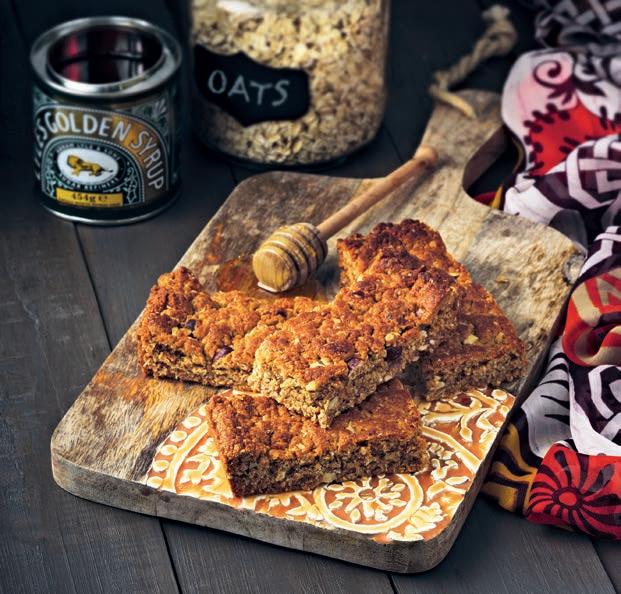
In a saucepan on medium heat, melt the butter, syrup, sugars and salt, until all the sugar granules have dissolved.
Remove the mixture from the stove, add the boiling water and bicarbonate of soda, mix well and set aside.
Combine all the remaining dry ingredients in a large bowl and give this a good mix. Add the wet ingredients to the dry ingredients. Combine to form a pliable and crumbly texture.
Transfer the mixture onto the prepared baking tray and press down to smooth it out and form a level base.
Bake at 180 °C for 10–15 minutes, then adjust the oven temperature to 140 °C and bake for another 10 minutes or until golden.
Allow to cool completely before cutting into squares. Serve or store in an airtight container for up to a week.
“Feriel Sonday has a very successful Facebook page entitled Feriel Sonday’s Heavenly Bites where she shares her much-loved recipes with her devoted followers. Her recipe makes the perfect Cape Malay bollas, and by perfect, I mean the lightest, flu est vanilla-infused bollas!”
FOR THE SUGAR SYRUP
2 C (500 ml) water
2½ C (625 ml) white sugar
FOR THE BATTER
4 C (4 × 250 ml) cake wheat flour
4 tsp (20 ml) baking powder
2 eggs
¾ C (200 ml) white sugar
1 tsp (5 ml) vanilla or caramel essence
¾ C (200 ml) canola or vegetable oil
Pinch of salt
2 C (500 ml) buttermilk
FOR FINISHING
3 C (750 ml) canola or vegetable oil for deep-frying, or more depending on the size of the saucepan
1 C (250 ml) desiccated coconut
PREPARING THE SUGAR SYRUP
Bring the water to a boil in a medium-size saucepan on high heat.
Add the sugar and boil for 7–10 minutes or until the sugar has completely dissolved and the sugar syrup has thickened slightly. Set aside.
PREPARING THE BATTER
In a bowl, sift the flour and baking powder twice and then set aside.
Place the eggs and sugar into the bowl of an electric mixer tted with
PREP 15 minutes COOK 1 hour, including resting time and syruping
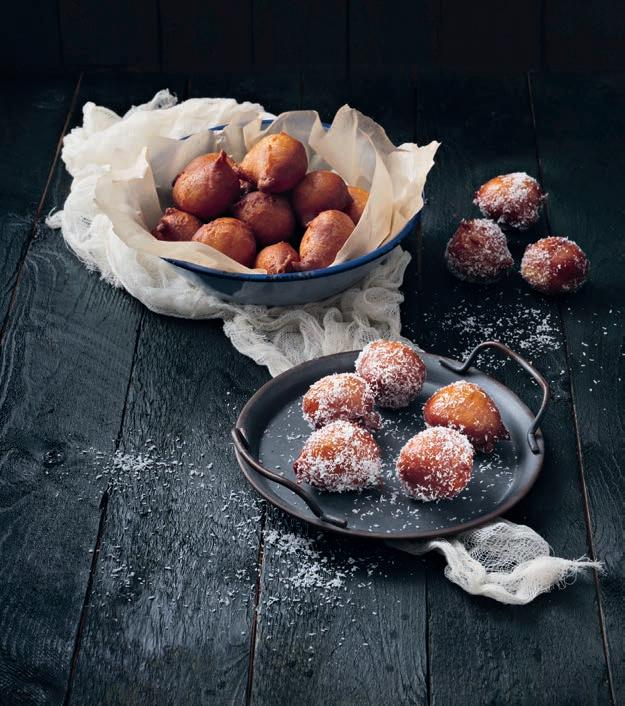
the paddle attachment, and mix until light and flu y.
Add the vanilla essence and oil, and mix until creamy.
Gradually add half of the sifted flour, the salt and half of the buttermilk, and mix.
Add the rest of the flour and buttermilk and continue mixing to form a smooth batter.
Set aside for at least 30 minutes before frying.
PREPARING THE BOLLAS
Line a plate with paper towel and set aside.
Heat the oil for deep-frying in a medium-size saucepan on medium to high heat for 12–15 minutes. (Drop a small teaspoon of the batter into the hot oil – if it floats to the top, the oil is ready.)
Place tablespoonsful of the batter into the hot oil and fry until golden brown, turning halfway.
Remove the bollas from the oil with a slotted spoon and set aside on the paper towel-lined plate.
Reheat the syrup on a medium heat and drop about four bollas into the hot syrup. Coat with the syrup until glossy, then set aside on a serving plate or platter and sprinkle with the desiccated coconut.
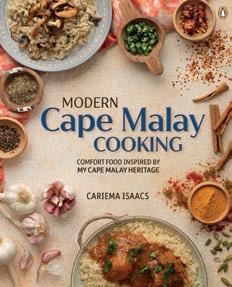

Modern Cape Malay Cooking hits shelves in April.
“The Instant Pot is perfect for this recipe because it locks in flavour and keeps the bobotie moist. It also creates a feathery light egg custard topping – the pot doesn’t crisp up the topping, so I pop it into the airfryer for 3–5 minutes to attain that golden blush on the top.”
FOR THE EGG CUSTARD
4 large eggs, beaten
1 C (250 ml) milk
1 tsp (5 ml) freshly grated nutmeg Pinch of salt
FOR THE BOBOTIE
600 g lamb or beef mince
1 egg, beaten
4 slices stale bread, crusts removed, soaked in 1 C (250 ml) water for 5 minutes, drained
2 Tbsp (30 ml) canola, sunflower or olive oil
2 medium-size onions, nely sliced
2 tsp (10 ml) salt, or to taste
1 clove garlic, peeled and crushed
1 tsp (5 ml) turmeric
¼ tsp (1.25 ml) ground cloves (optional)
2 tsp (10 ml) Pakco curry powder
1 tsp (5 ml) kokni masala or ½ tsp (2.5 ml) chilli powder
¼ C (60 ml) golden sultanas or dried
cranberries, soaked in ½ C (125 ml) cooled boiling water for 5 minutes, then drained
5 dried Turkish apricots, thinly sliced 4 bay leaves or citrus leaves, for garnishing
PREPARING THE EGG CUSTARD
Place all the ingredients into a mixing bowl and whisk. Set aside.
PREPARING THE BOBOTIE
Prepare a 20 cm springform pan by spraying it with nonstick spray. Also line the outside of the pan with aluminium foil to ensure it doesn’t leak during cooking.
Place the mince, beaten egg and bread (excess water squeezed out) into a mixing bowl. Use your hands to mix together until it resembles a meatloaf consistency. Set aside.
Turn on the Instant Pot and set it to Sauté mode on high setting. Heat the oil and then add the sliced onions. Sauté the onions for 10 minutes, stirring every now and again.
Add the salt, garlic, turmeric, ground cloves (if using) and curry powder, masala or chilli powder and
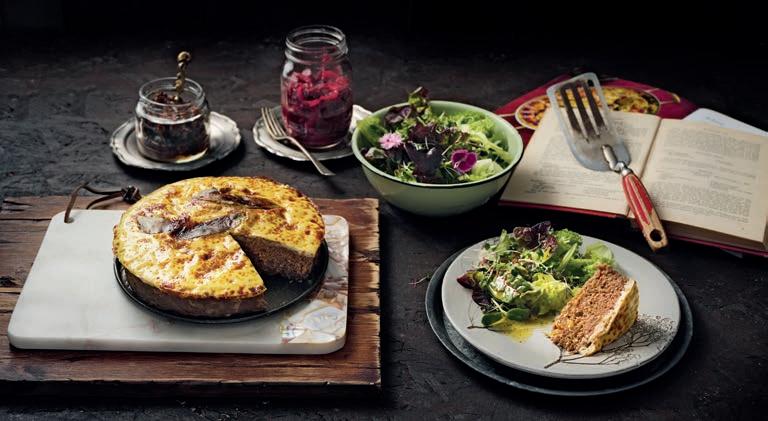
sauté for 2 minutes, adding just a dash of water if the ingredients are sticking to the bottom of the pot.
Switch o the Instant Pot and transfer the warm ingredients to the meatloaf mixture. Add the soaked sultanas and sliced apricots and use a wooden spoon to combine.
The next step is to cook the bobotie, which means you’ll have to wash the inner pot of the Instant Pot rst. Once washed, rinsed and dried, place it back into the Instant Pot ‘casing’.
Place the steaming rack into the Instant Pot. Pour ¼ C (60 ml) water into the Instant Pot.
Spoon the mince mixture into the prepared springform tin and smooth the top. Place the springform tin on top of the steaming rack. Pour the egg custard layer on top and garnish with the bay or citrus leaves.
Secure the lid and move the vent up to Sealing Position. Select Meat/ Stew on Medium Pressure and set the time to 10 minutes. Once done, allow the pressure to release naturally, i.e. wait for the pin to drop.
Unlock and open the lid. Remove the springform tin and transfer to the air-fryer. Set the air-fryer to 200 °C and air-fry for 4–6 minutes or until golden on top.
Remove the pan gently and rest on a cooling rack. Insert a knife between the bobotie and springform pan and run it along the edges of the bobotie. Open the latch of the springform pan and extend the latch so that the sides of the pan separate from the bobotie. Lift the bobotie with an egg lifter or slide it onto a serving platter.


Requests for money by parents, siblings and other relatives carry a mental and emotional price, a ecting our relationships with our loved ones. Helping others is commendable, but how do you do it in such a way that you avoid debt and put an end to the poverty cycle? Ndumi Hadebe broaches the subject of black tax.
t the beginning of 2021, I reluctantly decided to pen my views about black tax, arguing that black tax is more about boundaries than it is about money. I was never ready for what my research uncovered, one of which was learning just how much fear of a relationship breakdown was driving decisions and frustrations around black tax.
What I’d thought would be a small passion project, dragged on for close to two years. I also learned that this fear is successfully keeping people in the cycle of black tax to the point of expensive debt such as credit cards and loans.
It dawned on me that payers of black tax live in various forms of fear.
Fear of speaking their truth because they fear losing the relationship in question.
Fear of being judged if they were to assert their boundaries.
And fear that they may never achieve their nancial ambitions of being debt-free, or have some form of nancial freedom, because of their commitments to black tax.
Fear is successfully keeping people in the cycle of black tax to the point of expensive debt such as credit cards and loans.
our relationships with our families but damaging to our relationships with ourselves. e shame we feel for getting into debt because we fear saying no, the guilt we feel for compromising our children’s quality of life, the ongoing nancial stress we endure because we lack the courage to own our truth on this issue – are all bound to induce resentment and anger towards our families.
Not being honest about our nancial circumstances and where we stand on the issue of helping others at the expense of ourselves, may, at face value, seem like the safest option.
rough this book, I demonstrate how this ‘safe option’ is secretly and silently crumbling the very relationships we are trying to protect because the current status quo is basing family relations more on money rather than on principles of love, compassion and values that encourage open and honest communication.
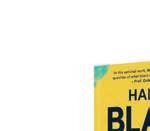
Yet, black tax remains an elephant in the room. Whilst people have strong views and feelings about it, no one is talking about it with their families, with most choosing to complain to friends or on social media, which doesn’t solve the problem.

In Handle Black Tax Like a Pro, I’m hoping that people realise that – whilst these fears are valid – not addressing the core issues of black tax such as entitlement is not only damaging to


Navigating any relationship from a place of fear is detrimental to parties involved. I believe that practicing healthy boundaries is a courageous step that payers of black tax need to take. Not only for the bene t of their nances, but also in having healthier relationships with their loved ones.

Handle Black Tax Like A Pro is out now.
Commitment to one’s personal truth will addresses more than just black tax issues because healthy boundaries organically permeate into other areas of life, such as work, romantic relationships and friendships. Practicing healthy boundaries brings about an alignment – a noteworthy sense of mental and emotional peace – and the freedom to be your authentic self.”

